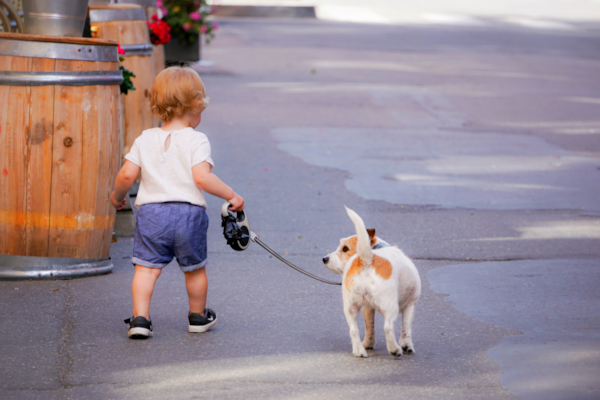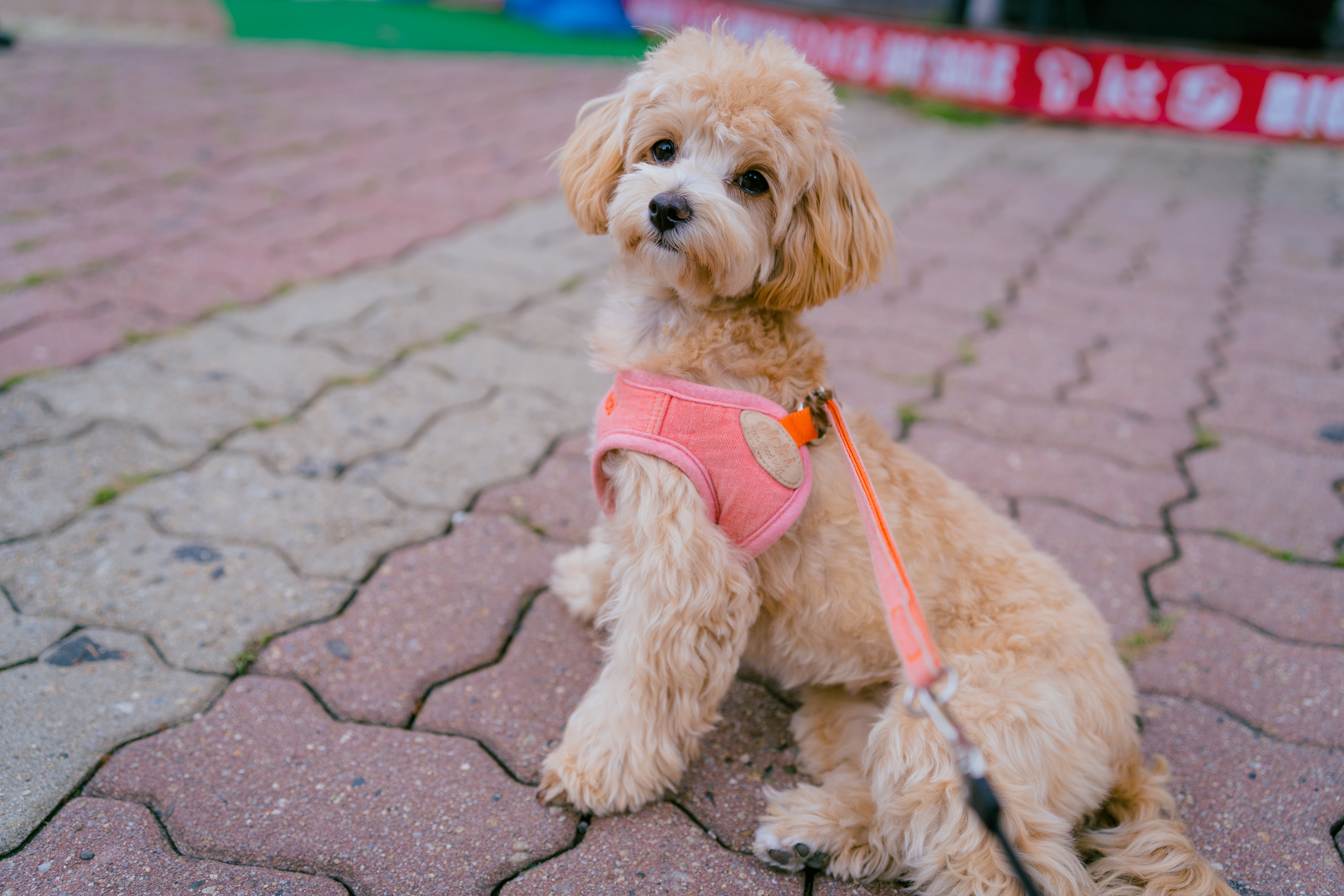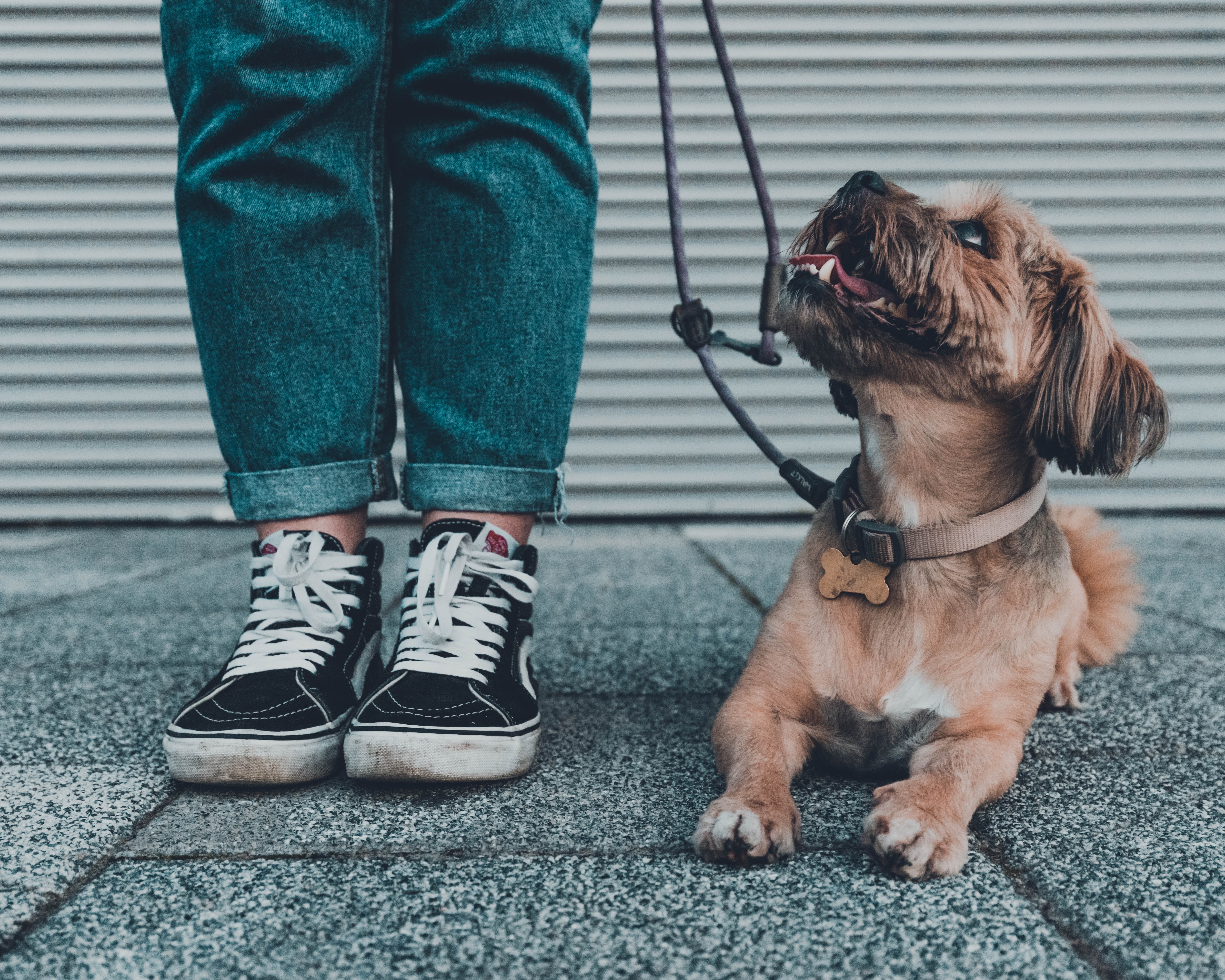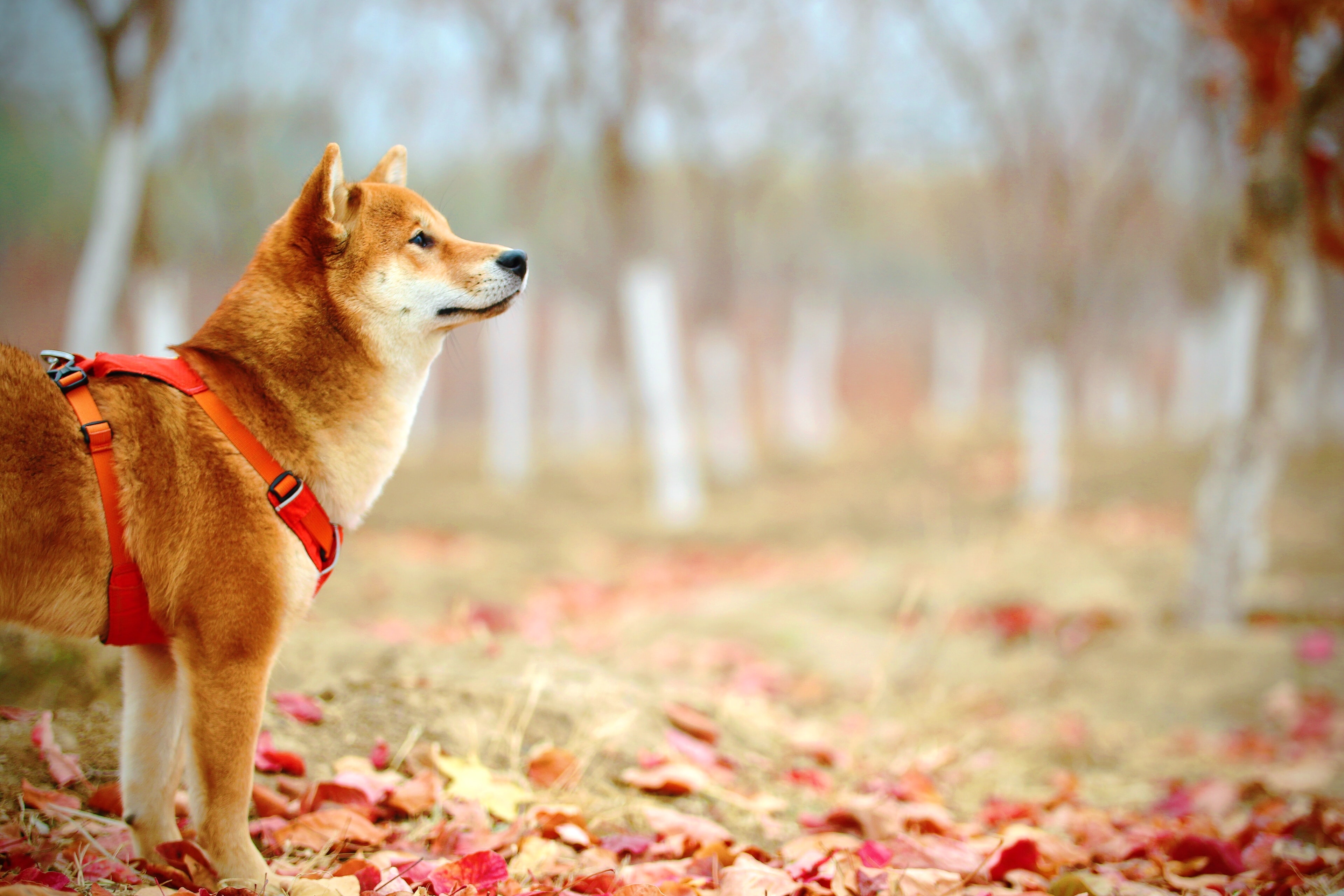
Leash training a dog may seem like a daunting task, but it can be a fun and rewarding experience for both you and your furry best friend! If you're a dog lover, you know that taking your pup for a walk is one of life's simple pleasures. However, getting them to behave on a leash can sometimes be a challenge. That's why we're here to help!
In this blog, we'll be sharing tips and tricks on how to leash train a dog, making the process as seamless as possible. From finding the right leash to teaching basic commands, we've got you covered. So, whether you're a first-time dog owner or a seasoned pro, join us on this journey to train your dog to walk on a leash like a pro.
Table of Contents
Materials needed for Leash Training

Before you begin the journey of leash training your dog, you will need a few key materials. These include:
Collar: Make sure to choose a comfortable and properly fitted collar for your dog. A standard buckle collar or a front-clip harness are good options for leash training. Avoid using a choke or prong collar as they can cause discomfort or injury to your dog.
Leash: Choose a leash appropriate for your dog's size and strength. A standard 6-foot leash is a good starting point, but if you have a larger or more energetic dog, you may want to consider a longer or stronger leash.
Treats: Positive reinforcement is an important part of leash training. Use small, high-quality treats that your dog loves to reward them for good behavior.
Patience and Consistency: Leash training takes time and consistency, so make sure to set aside enough time to work with your dog and be consistent in your training methods.
RELATED: New Puppy Owner Guide
Step 1: Getting your dog used to wearing a collar and leash

The first step in leash training your dog is getting them used to wearing a collar and leash. Here are some tips to help make this transition as smooth as possible:
- Properly Fit the Collar: Make sure the collar is snug but not too tight. You should be able to fit two fingers between the collar and your dog's neck.
- Introduce the Collar and Leash Slowly: Start by letting your dog sniff and explore the collar and leash while they are in a relaxed state. Gradually increase the amount of time your dog wears the collar and leash around the house before taking them outside.
- Reward Good Behavior: Whenever your dog is calm and relaxed while wearing the collar and leash, give them a treat and praise. This will help them associate wearing the collar and leash with positive experiences.
- Be Patient: It may take some time for your dog to get used to wearing a collar and leash, but with patience and consistency, they will eventually come to accept it as a normal part of their routine.
RELATED: How To Potty Train A Puppy
Step 2: Introducing your dog to the leash

Once your dog is comfortable wearing a collar, it's time to introduce them to the leash. Here's how to do it:
- Attach the Leash to the Collar: Show your dog the leash and let them sniff it. Then attach it to their collar, making sure that it's not too tight or too loose.
- Let your dog Drag the Leash: Allow your dog to drag the leash around the house for a few minutes at a time, gradually increasing the amount of time as they become more comfortable with it.
- Reward Good Behavior: As your dog gets used to the feeling of the leash, give them a treat and praise whenever they show calm and relaxed behavior.
- Start Walking with your Dog: Once your dog is comfortable with dragging the leash, start walking with them while they are wearing it. Keep the walk short and keep it to your home or backyard. Reward them with treats and praise when they walk calmly on the leash.
- Be Patient: Remember, this step may take some time, and your dog may show some resistance to the leash. Stay calm and be patient, with consistency and positive reinforcement, your dog will learn to walk on the leash.
RELATED: How To Crate Train A Puppy
Step 3: Teaching your dog to walk on a leash

Now that your dog is comfortable with the collar and leash, it's time to teach them to walk on a leash. Here's how:
- Hold the Leash Correctly: Hold the leash with your dominant hand, leaving some slack on the leash. Hold your other hand close to your waist, this will help you to give a gentle pull on the leash when needed.
- Use Commands: Use the command "heel" or "let's go" to indicate to your dog that it's time to start walking. Use a positive, upbeat tone to encourage your dog to walk with you.
- Reward Good Behavior: Reward your dog with treats and praise when they walk calmly on the leash.
- Correct Pulling: If your dog starts to pull on the leash, stop walking and stand still. Wait for the leash to go slack and then continue walking. This will teach your dog that pulling on the leash will not get them to where they want to go.
- Practice in Different Environments: Practice leash training in different environments, such as in the park, on the sidewalk, or in a busy area. This will help your dog to learn to walk calmly on the leash in different situations.
- Be Consistent: It's important to practice leash training regularly, so your dog can learn to walk calmly on the leash. Be consistent in your training methods and be patient. With time and consistency, your dog will learn to walk on a leash.
RELATED: 10 Reasons Why Dogs Lose Interest in Training & How to Fix it
Step 4: Troubleshooting common problems

Leash training is not always a smooth process, and you may encounter some common problems along the way. Here are some tips on how to troubleshoot and correct common issues:
Pulling: If your dog pulls on the leash, stop walking and stand still until the leash goes slack. Then continue walking. Over time, your dog will learn that pulling on the leash will not get them to where they want to go.
Chewing on the Leash: If your dog chews on the leash, try to redirect their attention with a toy or a treat. You can also try using a different type of leash, such as a leather or rope leash that may be less appealing to chew on.
Fear of Loud Noises: Some dogs may be scared of loud noises such as fireworks or thunderstorms. If your dog is scared and wants to pull away, try to keep them close and give them a treat when they remain calm.
Distracted by Other Dogs or People: If your dog is easily distracted by other dogs or people, try to redirect their attention back to you by calling their name and rewarding them with a treat.
Not Responding to Commands: If your dog is not responding to commands, try to be more consistent and clearer in your commands. Reward your dog with treats and praise when they respond correctly to your commands.
Seek Professional Help: If you're having trouble training your dog, consider seeking help from a professional dog trainer or behaviorist. They can provide you with guidance and support to help you and your dog succeed in leash training.
RELATED: 10 Common Dog Training Mistakes To Avoid
Conclusion
Leash training is an essential part of dog ownership. With the right techniques and approach, it can be a fun and rewarding experience for both you and your dog. In this article, we have provided step-by-step instructions on how to leash train your dog, as well as tips and troubleshooting advice for common problems that may arise during the process.
Remember, leash training takes time and consistency, so make sure to set aside enough time to work with your dog and be consistent in your training methods. With patience, consistency, and positive reinforcement, your dog will learn to walk calmly on the leash. If you are having trouble training your dog, seek professional help from a dog trainer or behaviorist. They can provide you with guidance and support to help you and your dog succeed in leash training.
Scroll down to see FAQs about leash training!
What To Read Next
How To Stop A Puppy From Biting You
Puppy Feeding 101: A Comprehensive Guide for Raising a Healthy Pup
Frequently Asked Questions
What is leash training? Leash training is the process of teaching a dog how to behave and walk properly on a leash. This involves teaching the dog basic commands and behaviors, such as walking calmly at your side, not pulling on the leash, and stopping when told to do so. The goal of leash training is to make walking with your dog a safe, comfortable, and enjoyable experience for both you and your pet. It also helps to prevent behavioral issues and keeps your dog safe and under control in public places. Effective leash training requires patience, consistency, and positive reinforcement techniques.
When should leash training begin? Leash training can begin as soon as your dog is old enough and has received all necessary vaccinations. Generally, puppies can start leash training at around 8 to 10 weeks old, as long as they have had their first round of vaccinations. It's important to start leash training early so that your dog can learn good habits from a young age and become comfortable with the process. However, it's never too late to start leash training, and older dogs can also benefit from the process.
How long should leash training take? The length of time that leash training takes can vary depending on several factors, such as your dog's age, breed, personality, and prior training experiences. Some dogs may pick up leash training quickly, while others may take longer to learn and master the skills. On average, it can take anywhere from a few days to a few weeks to several months of consistent training to fully leash train a dog. Can you leash train with a harness?
How to leash train a puppy that won't walk? If your puppy is resistant to walking on a leash, there are several things you can do to encourage them. First and foremost, it's important to make the experience as positive as possible. This can be done by using treats and praise to make the leash and walking a fun and rewarding experience for your puppy. Try to choose a treat that your puppy loves and use it to lure them along as you take short walks around the house or yard. Another approach is to use a head collar or a front-clip harness to give you more control over your puppy's movements. These tools can help to reduce pulling and make it easier for you to steer your puppy in the right direction.
What is off leash training? Off-leash training refers to the process of teaching a dog to follow commands and behave appropriately without being physically restrained by a leash. The goal of off-leash training is to give the dog more freedom while still maintaining control and ensuring their safety. Off-leash training typically involves teaching the dog basic obedience commands, such as "come," "stay," and "heel," as well as other behaviors, such as recalling the dog to the owner's side and avoiding dangerous or distracting stimuli. Off-leash training typically requires a high level of trust between the dog and owner and is usually reserved for well-trained and obedient dogs that have a solid foundation in basic obedience and leash training.
When to start loose leash training? It's best to start loose-leash training after your dog has a good foundation in basic leash training. This means that your dog should be able to walk calmly on a leash and respond to basic obedience commands, such as "come," "sit," and "stay." The exact age at which you can start loose-leash training will depend on your dog's breed, size, and individual temperament, but most dogs are ready to start around 6 to 12 months of age.




